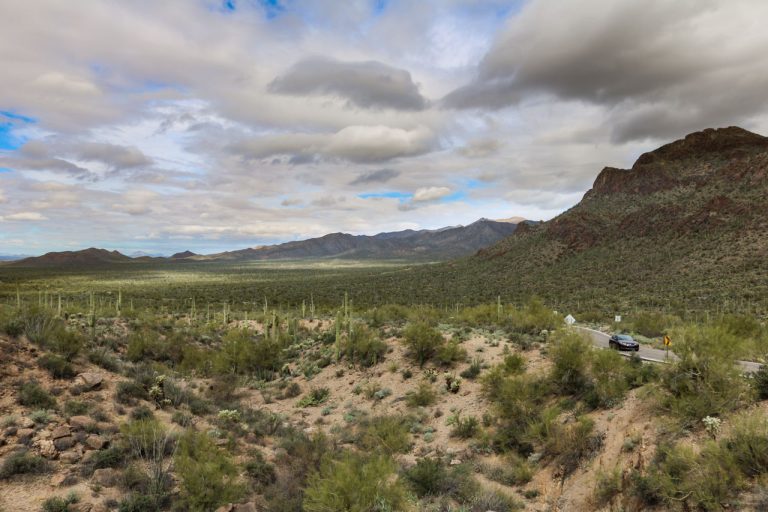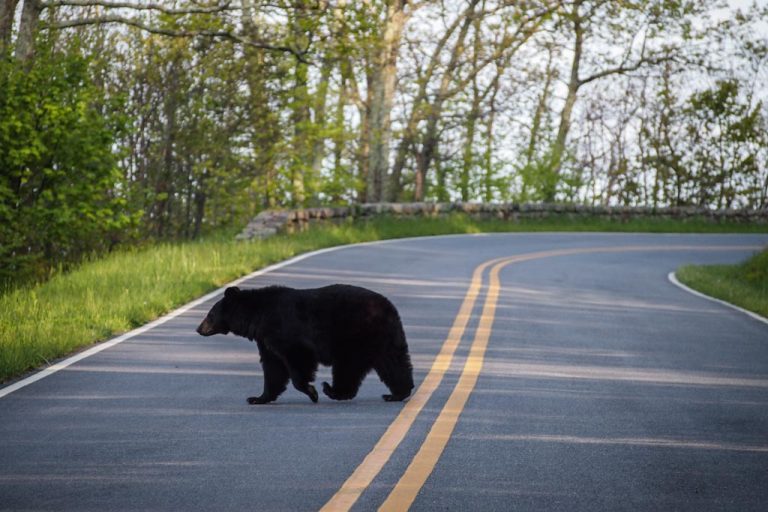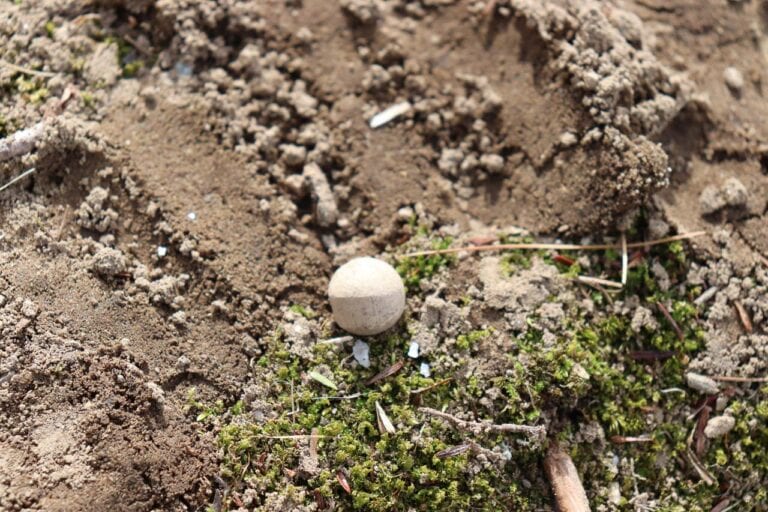Where to See Alligators and Crocodiles in the Everglades
The Everglades is not only the largest subtropical wilderness in the United States, a UNESCO World Heritage Site and a Wetland of International Importance. It’s also the only place on the planet where you can see alligators and crocodiles living alongside each other.
The opportunity to see both alligators and crocodiles is the very reason why so many people visit Everglades National Park every year.
Besides these prehistoric reptiles, the Everglades is also renowned around the world for its incredible diversity of bird life. You can read all about the famous birds of the Everglades in this blog post.
In this post, you’ll learn all about the alligators and crocodiles of the Everglades. I’ll provide plenty of background information on both species, as well as the best places to see alligators and best locations to see crocodiles in the Everglades.
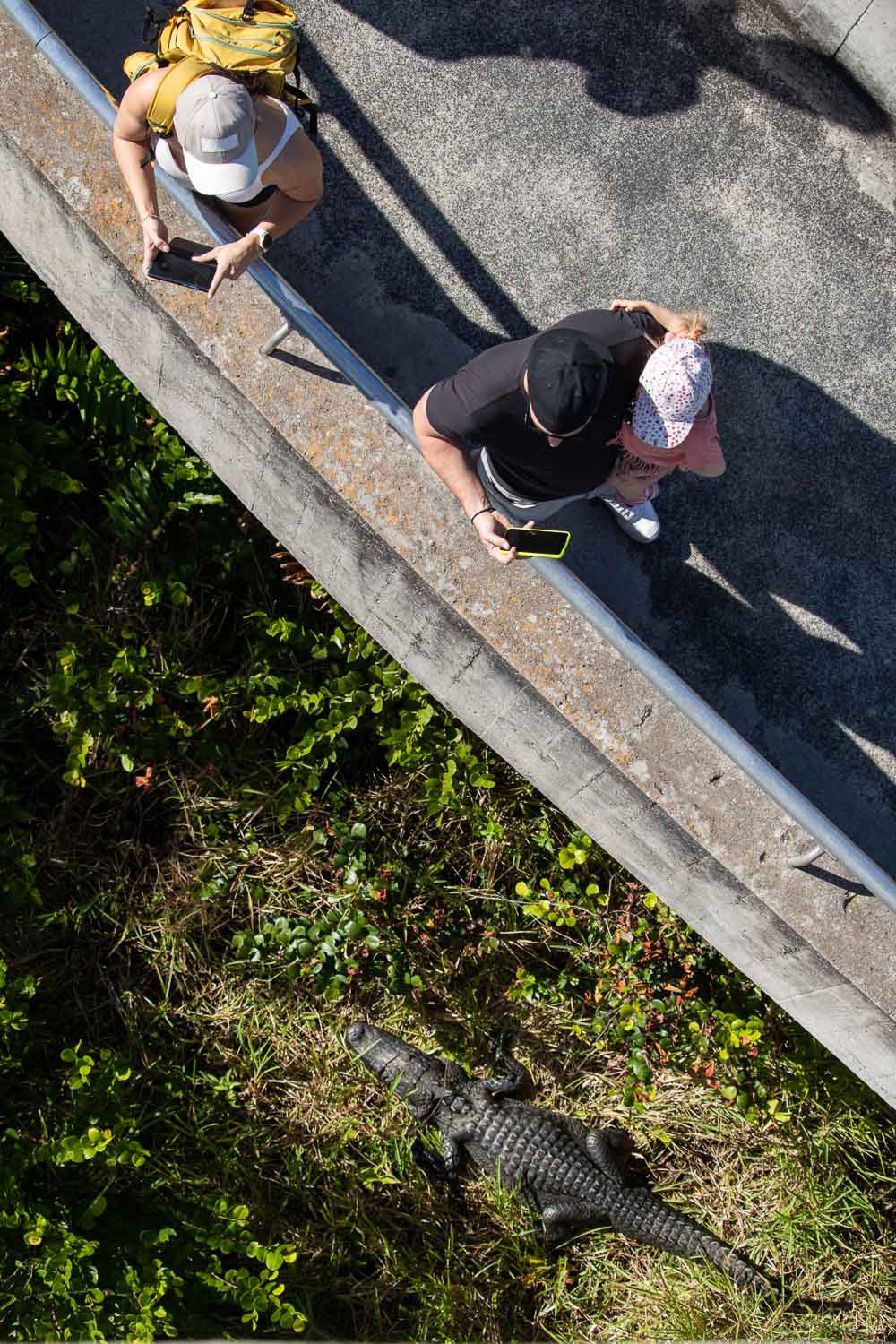
This blog post about the best places to see alligators and crocodiles in the Everglades contains affiliate links. You can read more about our Terms of Use / Disclosure here.
Where to See Alligators and Crocodiles in the Everglades
The sprawling sawgrass marshes, flooded cypress forests, coastal mangroves and estuarine waters of the Everglades offer the perfect home to alligators and crocodiles alike.
“This landscape is unlike any other—beautiful, mysterious and wild,” the National Park Service says. “Here, tropical and temperate species flourish side-by-side in an environment, part Caribbean, part North American.”
The Everglades encompasses vast freshwater wetlands, as well as the shallow saltwater of key-dotted Florida Bay. It’s a wildlife paradise. In fact, Everglades National Park is one of only a few U.S. national parks established to protect not a landscape, but unrivaled biodiversity.
American alligators and American crocodiles embody the extraordinary wildlife viewing opportunities in the Everglades. It’s a national park experience that’s—quite literally—unique on Earth.
Note: For the purpose of this post, whenever I talk about ‘the Everglades’ in general, I refer to both Everglades National Park and Big Cypress National Preserve. Located adjacent to one another and preserving overlapping habitats, those two parks are both managed by the National Park Service and, therefore, part of America’s National Park System.
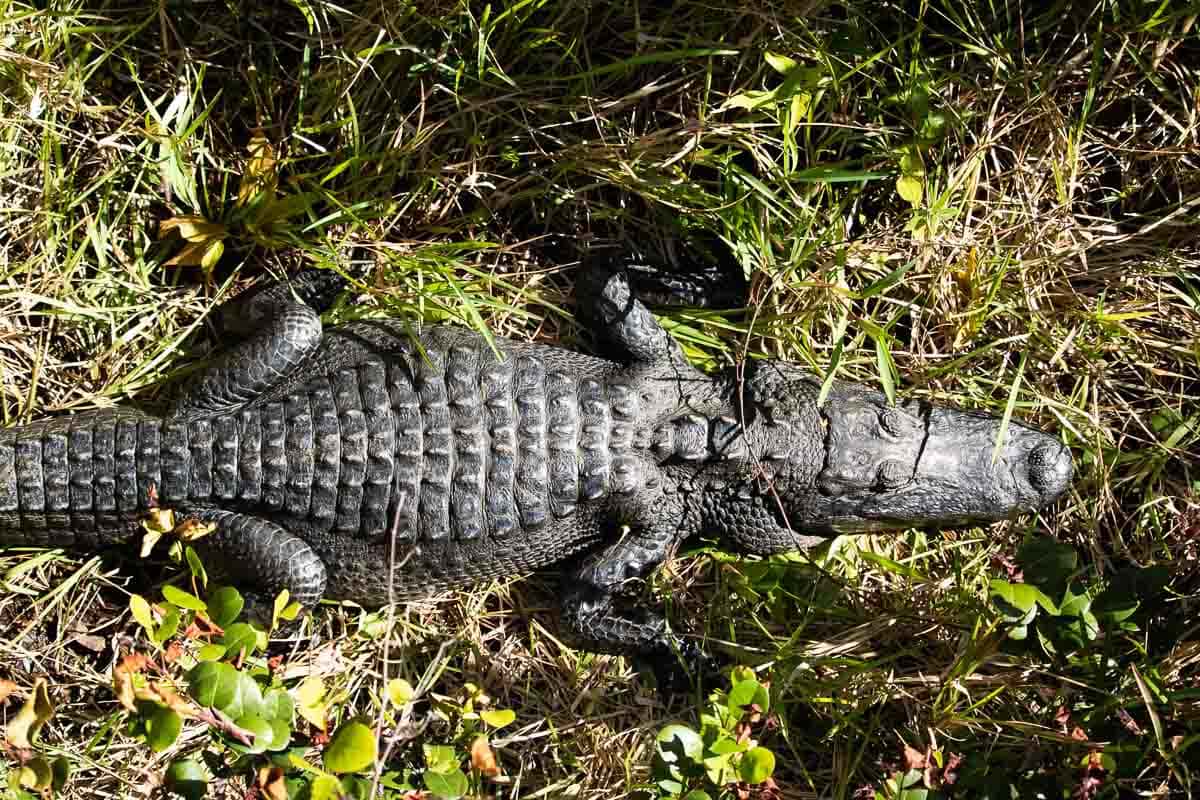
What Is the Difference Between Everglades Alligators and Crocodiles?
Before we proceed to answering questions about the Everglades alligators and crocodiles separately, let’s first get an important general question out of the way.
What exactly is the difference between alligators and crocodiles in the Everglades anyway?
Generally speaking, there are a few distinct differences between both of these large reptiles: their skin color, their teeth, the shape of their heads and where they live. Those four characteristics should allow you to determine whether you’re looking at an alligator or a crocodile.
It’s also good to know that the Everglades is home to American alligators (Alligator mississippiensis) and American crocodiles (Crocodylus acutus), both of which are distinct from other alligator and crocodile species elsewhere in the world.
Skin Color
- Alligators have a dark-gray, almost black skin color, with a cream-colored underside.
- Crocodiles have a light-brown or olive-green skin color, with a white to yellowish underside.
Teeth
- When alligators close their mouth, only their upper teeth remain visible.
- When crocodiles close their mouth, both their upper and lower teeth remain visible. (At least the fourth tooth on both sides of the lower jaw is visible when the mouth is closed.)
Head Shape
- Alligators have a broad U-shaped snout.
- Crocodiles have a narrow V-shaped snout.
Habitat
- Alligators prefer freshwater environments, such as swamps, marshes, rivers and lakes. (They are, however, occasionally seen in the brackish water of mangrove swamps along the coast.) The Everglades wetlands are the southernmost extreme of the range of American alligators.
- Crocodiles live in saltwater, which is found in the Everglades in mangrove forests along the mainland coast, in coastal estuaries and in shallow Florida Bay. The southern tip of the Florida Peninsula is the northernmost extreme of the natural range of American crocodiles.
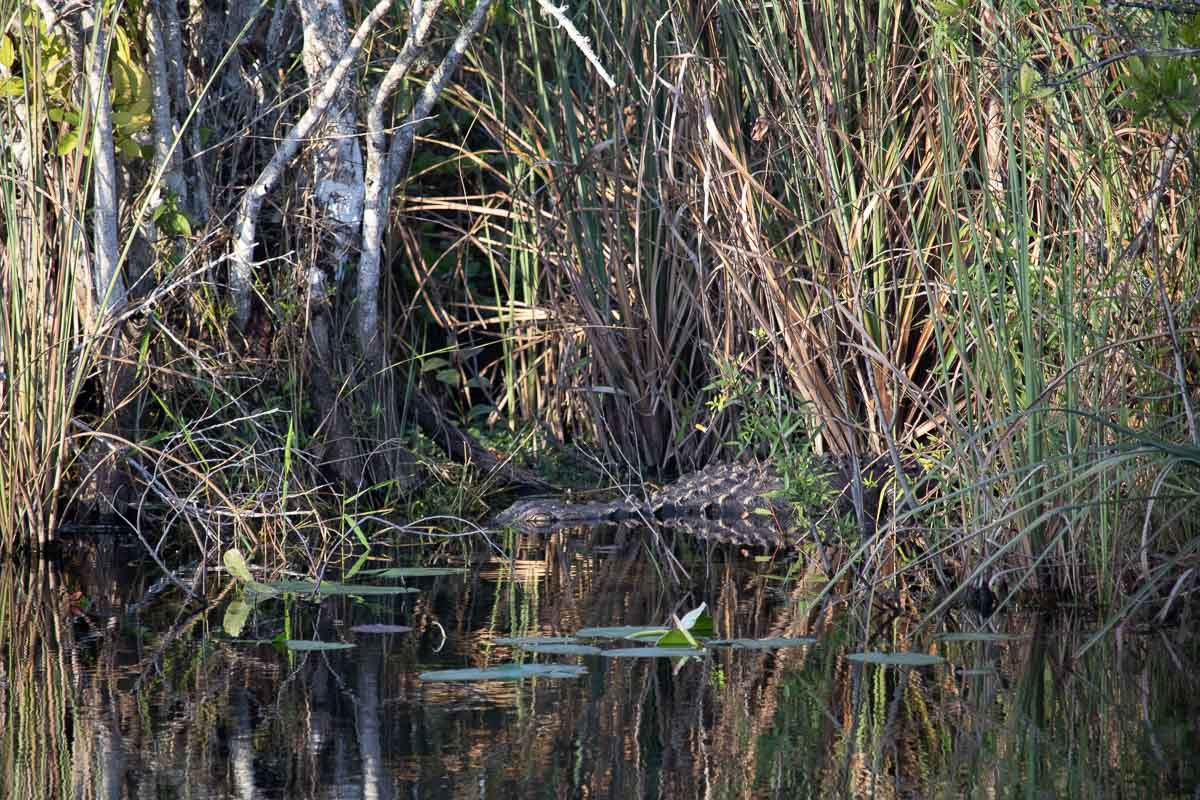
Everglades Alligators FAQ
Now that you’re able to make the distinction between alligators and crocodiles in the Everglades, let’s zoom in on each species individually.
We’ll start with American alligators, which are abundant across the entire Everglades region and much of the American South.
You’ll find several fun facts about Everglades alligators below, followed by the best places to see alligators in the Everglades.
Where Do Alligators Live in the Everglades?
At home in virtually all bodies of freshwater, alligators are present throughout the Everglades. You can find them in any freshwater environment, from marshes and streams to ponds, lakes and canals.
Occasionally, you might even see a ‘gator crossing a road or trail on its way between freshwater sources.
How Many Alligators Live in the Everglades?
Alligators thrive in the various freshwater environments in the Everglades. Current estimates put the Everglades alligator population at around 200,000.
What Do Everglades Alligators Eat?
Juvenile alligators eat small animals like insects and other invertebrates, as well as fish and frogs.
Once alligators reach adulthood, their diet shifts to larger prey animals. Adult alligators feed on small mammals, all kinds of fish, birds and other reptiles, including turtles and even small alligators.
It’s interesting to know that the feeding activity of alligators in the Everglades depends on the water temperature. “Foraging ceases if the temperature drops below 68 to 73 degrees Fahrenheit,” the National Park Service says. Below those temperatures, alligators become much less active.
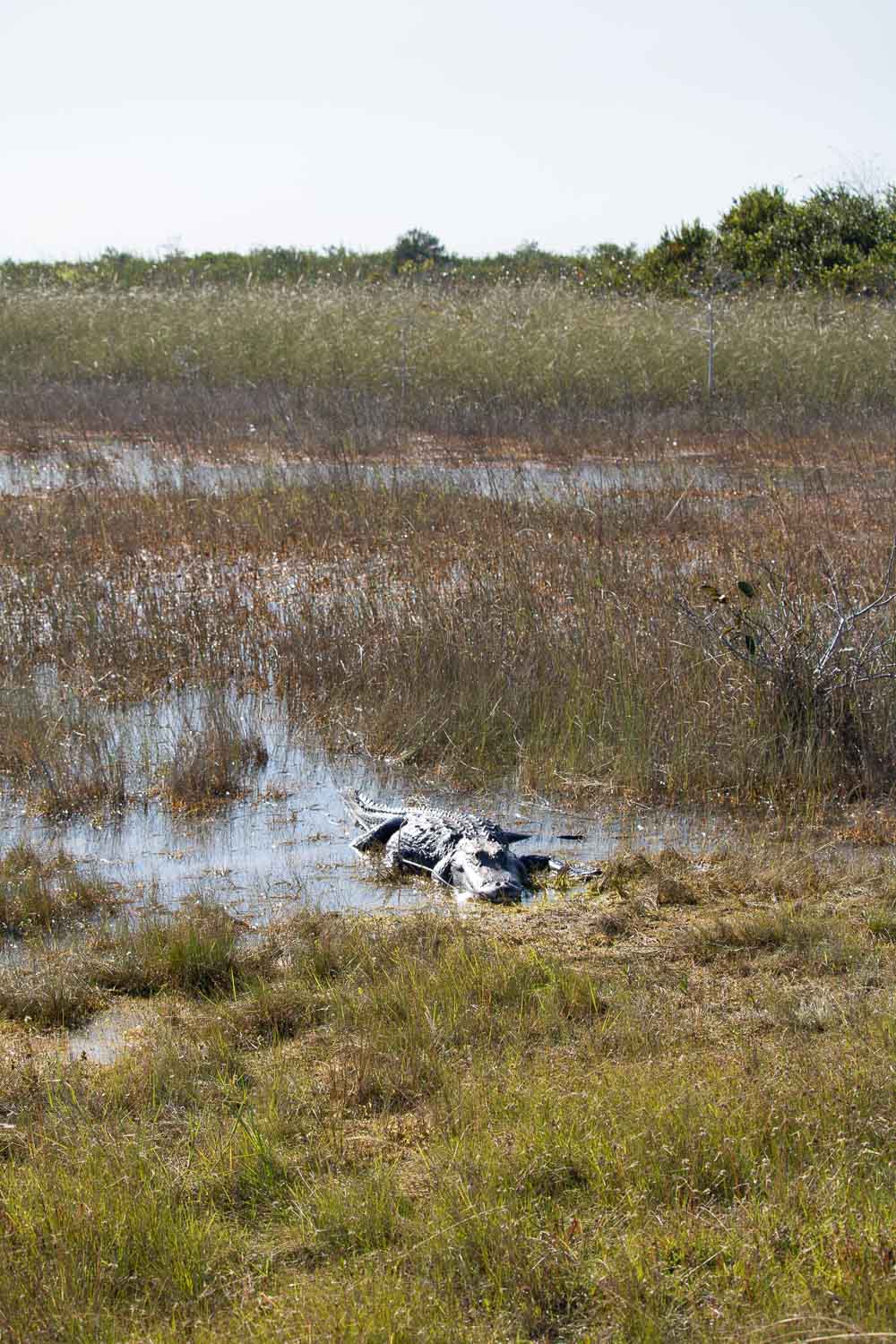
How Big Are the Alligators in the Everglades?
Both male and female alligators in the Everglades and South Florida tend to be smaller than those elsewhere in the South. Yet, they can still grow to more than sizeable lengths.
Adult male alligators sometimes reach a length of 13 to 15 feet, but many remain shorter. Adult female alligators, on the other hand, rarely grow longer than 10 feet.
How Fast Can Everglades Alligators Run on Land?
When looking for alligators in the Everglades, you’ll probably find them in the water or near the shoreline. However, they do sometimes walk on land, too, while traveling between bodies of water.
Alligators rarely run, but when they do, they can reach a top speed of 25-30 mph. They famously tire very quickly on land, though, and can only maintain that speed for a few dozen feet. These speeds are usually reached when an alligator lunges onto land out of the water to grab prey.
Alligators won’t chase a human on land for long distances, simply because they’re not physically able to and they don’t consider humans to be food in the first place.
How Old Can Alligators Get?
In Everglades National Park and Big Cypress National Preserve, wild alligators have no natural predators. If they manage to make it to adulthood, they can grow 35 to 60 years old.
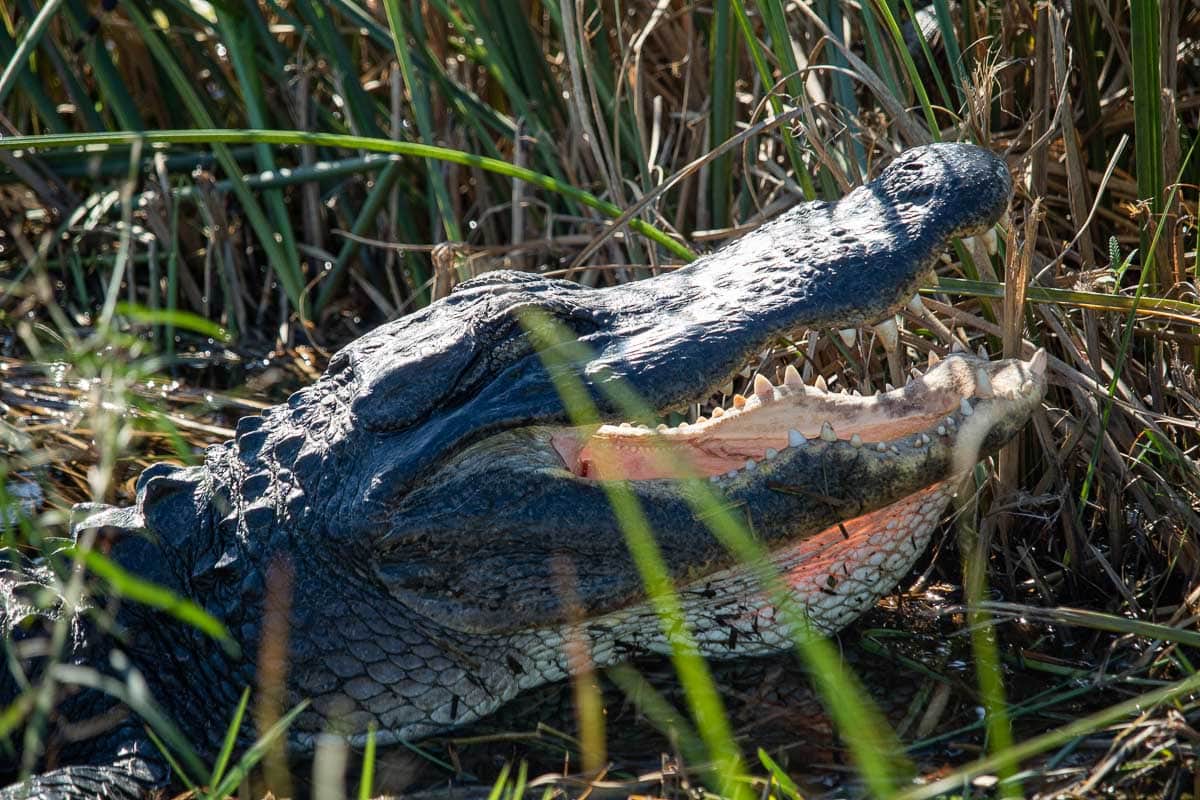
Are Alligators in the Everglades Dangerous?
According to the National Park Service, “human conflicts with alligators are rare and generally not serious, but incidents do occur and have been reported.”
Most alligator attacks on humans are the result of illegally feeding the alligator. This makes the animal less skeptical of humans and bolder, often causing the alligator to attack instead of flee.
Generally speaking, however, alligators are not considered dangerous to humans. They don’t see humans as prey and do not actively hunt people.
That said, though, it’s still important to be careful when recreating in alligator country. This is especially true near the water’s edge, whether it’s a canal, pond, river or marsh.
Avoid behaving like a prey animal might and keep children and pets away from the waterline. The park advises people to stay at least 15 to 20 feet from the shoreline and from any alligators you might come across. Additionally, swimming, diving and snorkeling is prohibited everywhere in the park.
What Is the Conservation Status of American Alligators?
Once threatened by extinction, American alligators were placed on the endangered species list in 1967. Their population quickly recovered thereafter and is now stable. In Florida alone, there are now more than 1.25 million alligators.
On the Red List of the International Union for Conservation of Nature (IUCN), which is “the world’s most comprehensive information source on the global extinction risk status of animal, fungus and plant species,” the conservation status of American alligators is Least Concern.
Best Places to See Alligators in the Everglades
Although alligators are found all throughout the Everglades, both in Everglades National Park and in Big Cypress National Preserve, some areas do offer better viewing opportunities than others.
If seeing alligators in the Everglades is your priority when visiting this vast wilderness region just west of Miami, I recommend focusing on the following three places.
Anhinga Trail
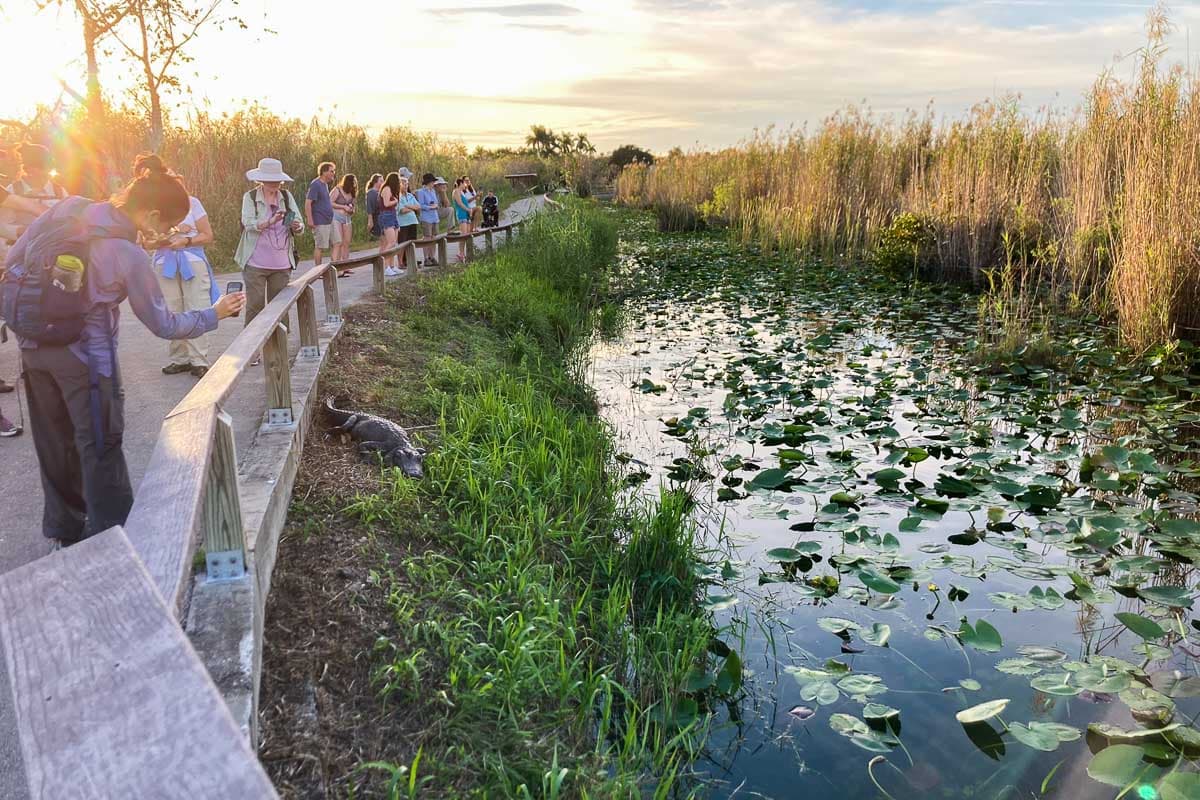
The amazing Anhinga Trail offers some of the best alligator viewing in the Everglades.
For many visitors to the Everglades National Park, this is the place they’ll see their first alligators. In fact, you’re pretty much guaranteed to see several ‘gators on the Anhinga Trail.
This 0.8-mile trail, which starts at the Royal Palm Visitor Center and features a boardwalk over sawgrass marshes, is one of the most popular trails in Everglades National Park because of its plethora of wildlife.
Although quite short, there’s so much wildlife along this trail that you could easily spend an hour or more here.
In addition to alligators, you might also see turtles, river otters, and birds like egrets, cormorants, herons and the trail’s namesake anhingas.
Shark Valley
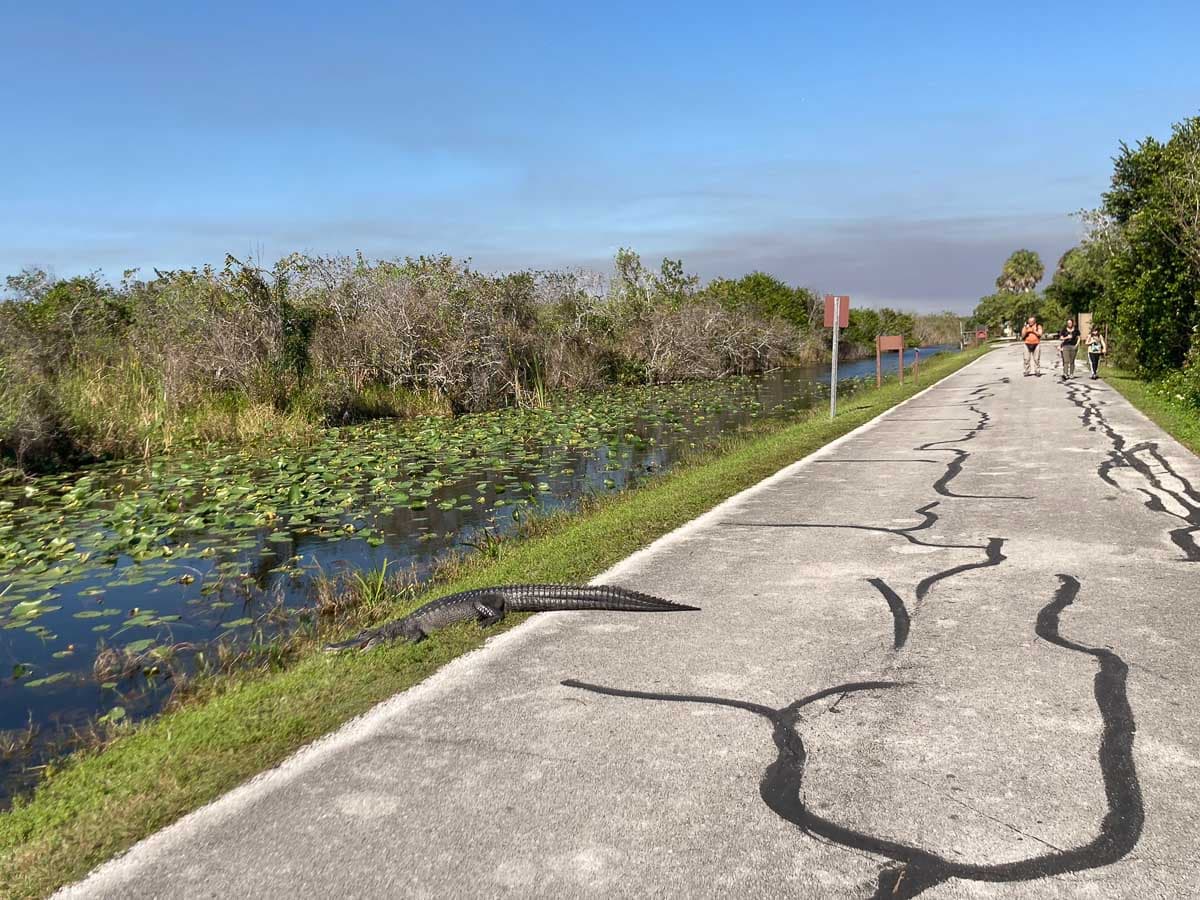
Of all places where you can see alligators in the Everglades, none compare to Shark Valley. This area in the northern part of Everglades National Park is nothing short of an alligator paradise.
The 15-mile Shark Valley Tram Road loops through this landscape of canals, sprawling wetlands, hardwood hammocks and ponds. You can join a guided tram tour or—my recommendation—rent bikes at the Shark Valley Visitor Center and explore at your own pace.
On my own bike trip on the Shark Valley Tram Road, I saw 91 alligators. That’s not an exaggeration, I actually counted them!
At the far end of the road, before the road loops back, the Shark Valley Observation Tower offers a panoramic view of the Shark Valley Slough. Don’t forget to look straight down, too, because there may be an alligator or two lounging right below the tower.
Big Cypress National Preserve
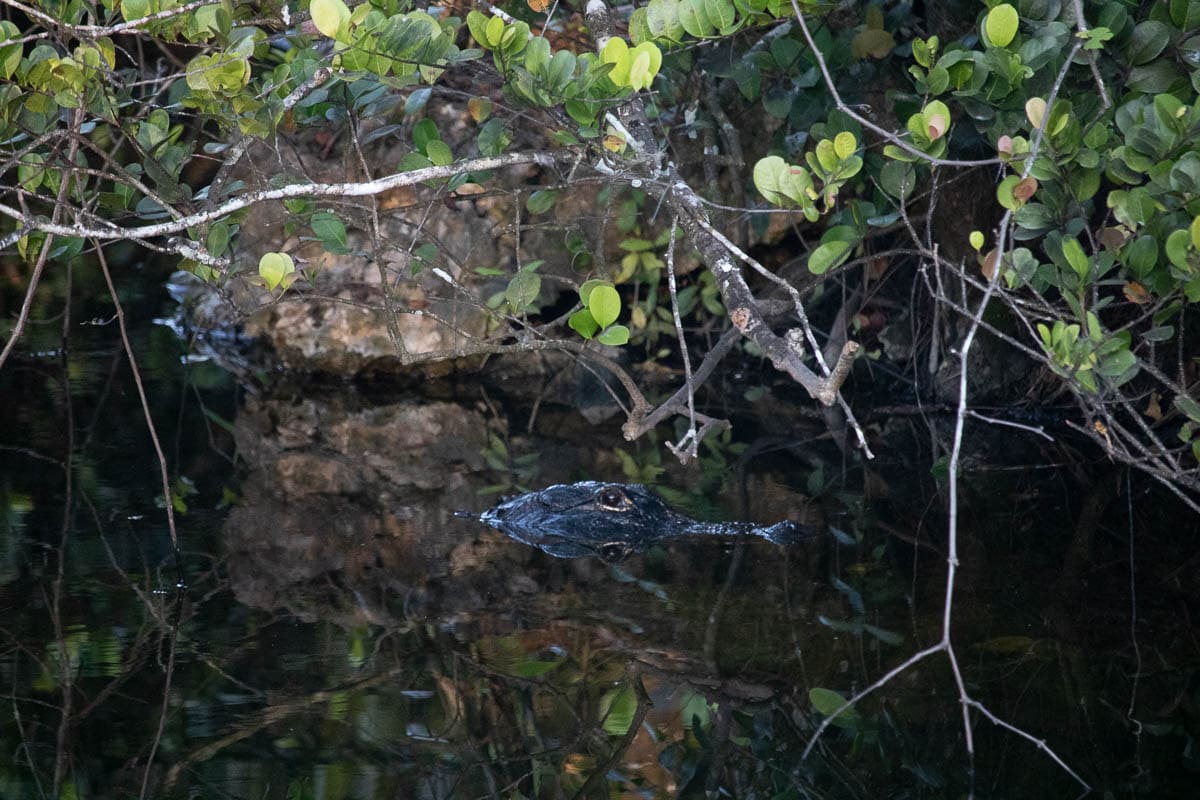
Although it’s not part of Everglades National Park, Big Cypress National Preserve is the park’s neighbor to the north. It shares much of the same Everglades environments, ecosystems and habitats and offers very similar alligator viewing opportunities.
Big Cypress National Preserve, a separate unit in the National Park Service system, is west of Miami along the Tamiami Trail.
Two scenic drives allow you to immerse yourself in this gorgeous wetland landscape: the popular 27-mile Loop Road and the 17-mile Turner River/Wagonwheel/Birdon Roads Loop Drive.
Whichever scenic drive you choose, it’s wildlife galore. The flooded cypress forests and ponds along the roads harbor a wealth of wildlife. Bird sightings are too many to count, including egrets, anhingas, herons, hawks and warblers.
Those wetlands are, of course, also ideal alligator habitat. Keep your eyes peeled and you’re nearly guaranteed to see one or more. On my drive along the Loop Road, I saw four alligators, one of which—and a pretty large one, too—was lounging on the lawn of a private residence.
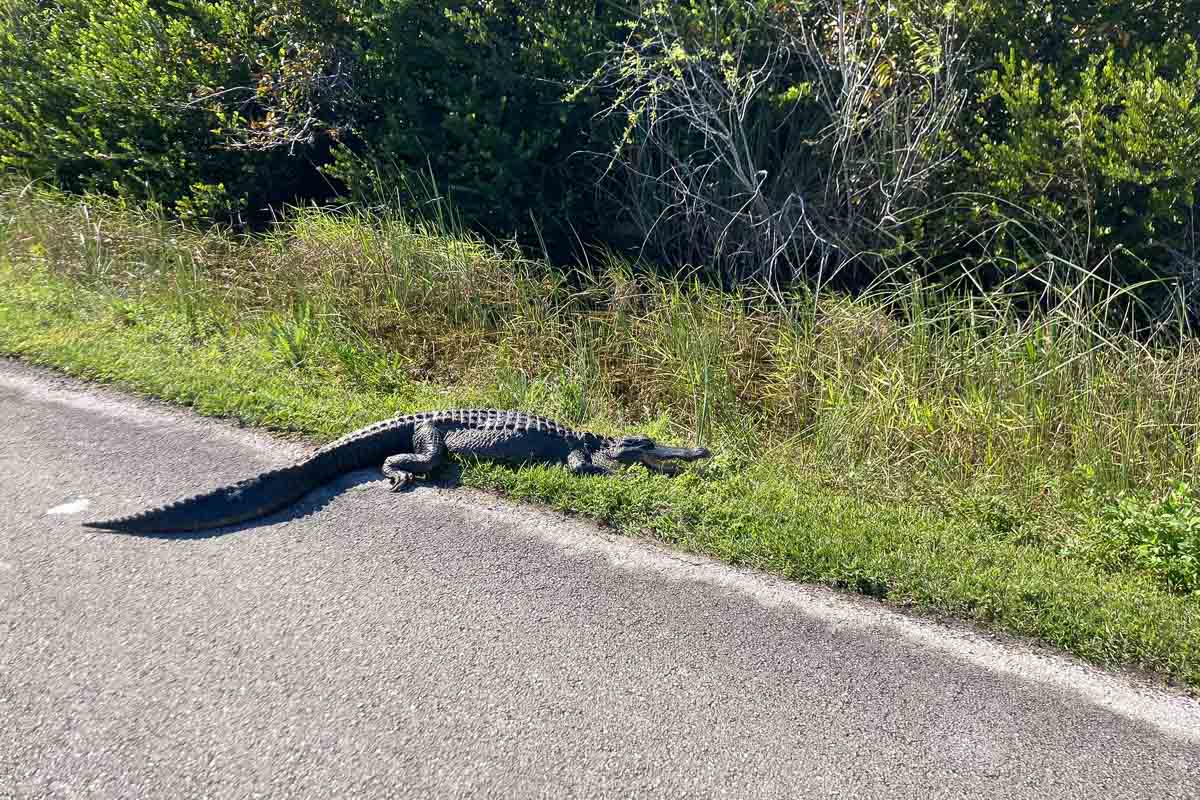
Everglades Crocodiles FAQ
Crocodiles are much rarer in the Everglades than alligators, but there are some areas where you’re quite likely to see one or more of them.
Before we get to the best places to see crocodiles in the Everglades, let’s answer some common questions about these fascinating, prehistoric-looking reptilians.
Where Do Crocodiles Live in the Everglades?
The National Park Service calls crocodiles “rare and secretive creatures that inhabit coastal, brackish and saltwater habitats.”
Therefore, your best chances of seeing an American crocodile in the wild are along and off the southern coast of Everglades National Park. That’s where you’ll find the mangrove forests, shallow saltwater and the numerous small islands of Florida Bay, all of which are preferred by the crocs of the Everglades.
How Many Crocodiles Live in the Everglades?
If Everglades National Park hadn’t been established, the American crocodile would likely be almost—if not entirely—extinct by now. Luckily, thanks to the protection provided by the park, the area’s crocodile population is slowly increasing.
Compared to alligators, however, which number in the hundreds of thousands in the Everglades, crocodiles are much less common.
Recently, it’s been estimated that there are between 1,500 and 2,000 crocodiles in South Florida. It’s a fair assumption that more than 1,000 of those reside in the Everglades.
What Do Everglades Crocodiles Eat?
“A crocodile will eat almost anything that moves,” according to the National Park Service.
Hatchlings and juvenile crocodiles feed on insects, small crustaceans, fish and snails.
Adult crocodiles, on the other hand, have a much wider food preference. They eat fish, snakes, crabs, turtles, birds and small mammals, which they hunt mostly at night.
Just like alligators, crocodiles are cold-blooded animals and need a certain body temperature to be able to perform bodily activities, including digestion and movement. As such, crocodiles won’t hunt, be able to digest or even move if it’s too cold or too hot.
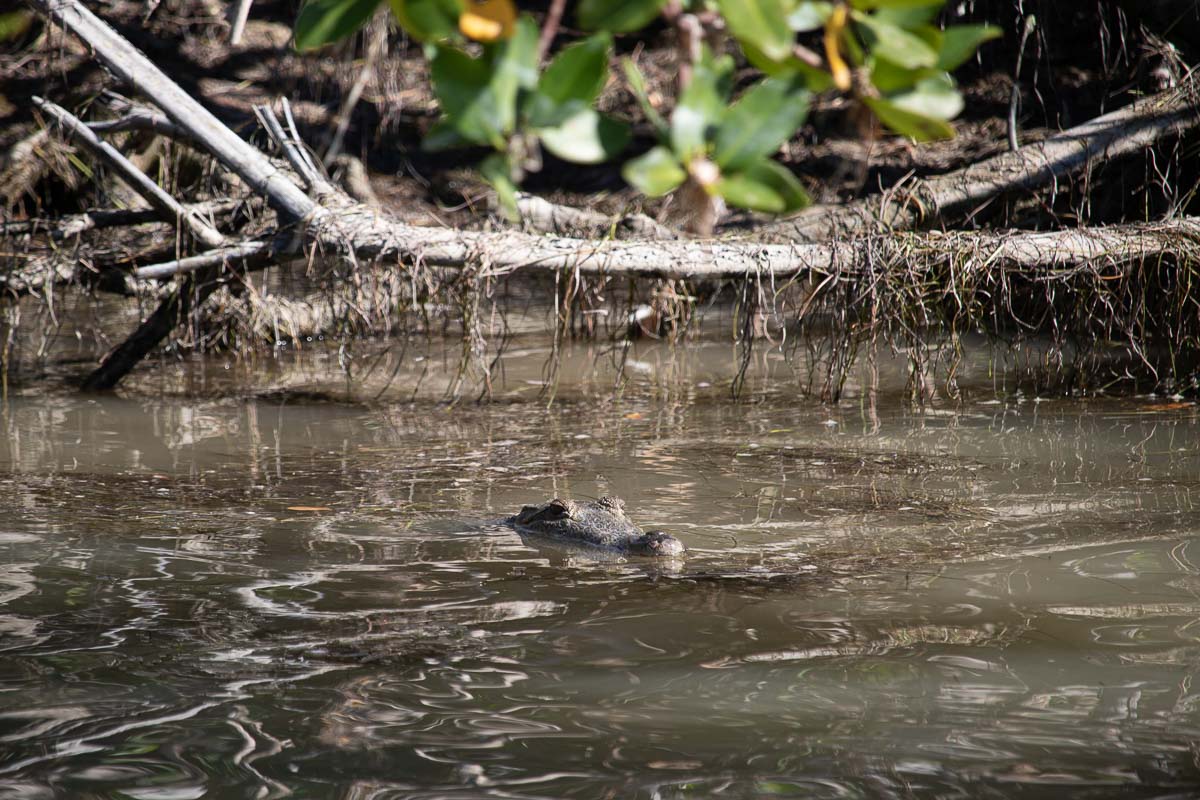
How Big Are the Crocodiles in the Everglades?
In captivity, adult male American crocs can reach up to 20 feet in length.
However, in the wilderness of the Everglades, adult male crocodiles rarely grow longer than 14 feet, which, it must be said, is still an objectively imposing size for a prehistoric reptilian predator.
Adult female crocodiles in the Everglades typically are from 8 to 12 feet in length.
How Fast Can Everglades Crocodiles Run on Land?
Even though they’re much more comfortable in their saltwater habitats, American crocodiles do occasionally walk on land. Usually this is just to get from one body of water to another.
And yes, they can run, too. Luckily, though, crocodiles are only able to maintain their top speed of 20 mph for a very short distance—no further than 70-100 feet.
Besides, how fast crocodiles can run on land really isn’t anything you should worry about. These animals don’t hunt on land, after all.
Just like the Everglades alligators, crocodiles are ambush predators. They surprise their prey in shallow water or on the water’s edge, which is typically when they reach their top speed—a short burst to try and catch prey.
How Old Can American Crocodiles Get?
In the wilds of the Everglades, crocodiles can live to a relatively old age. If they reach maturity in a protected place like Everglades National Park, they have a good chance to grow 50 to 70 years old.
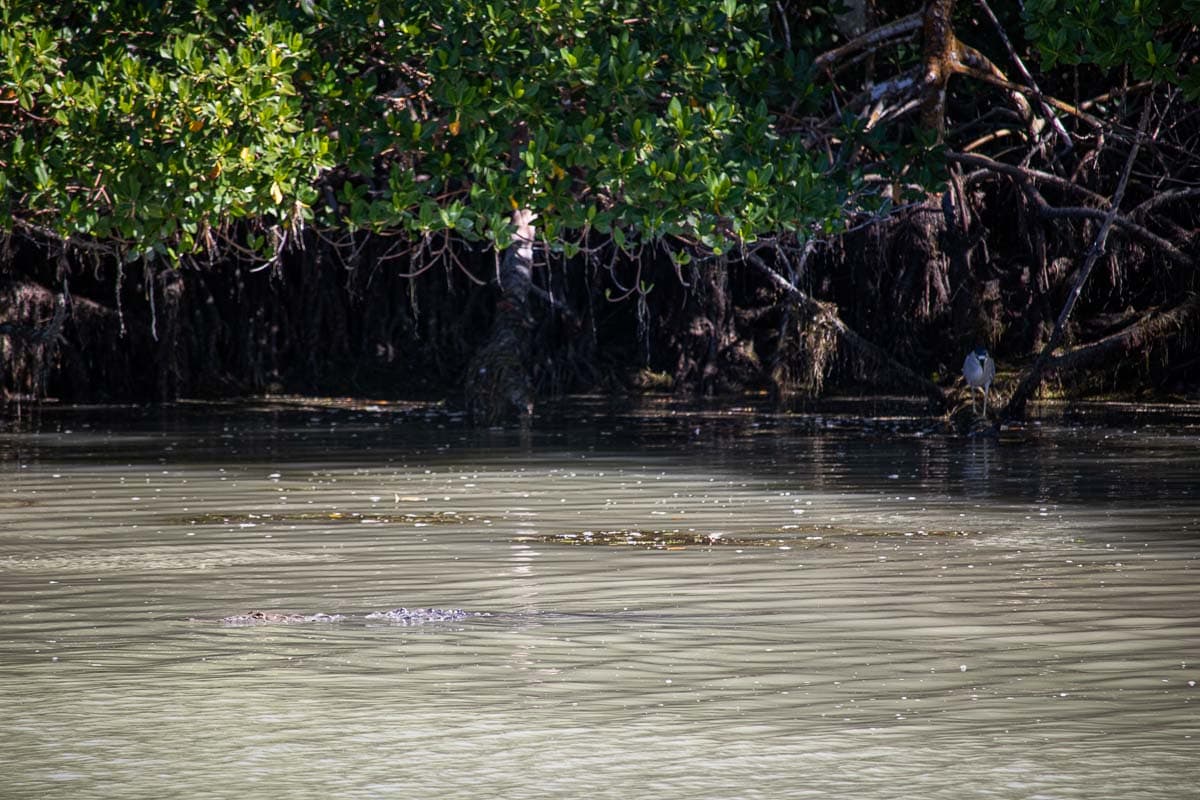
Are Crocodiles in the Everglades Dangerous?
Again similar to alligators, crocodiles in the Everglades are not considered dangerous to humans.
“Although the aggressive reputation earned by the American crocodile’s distant, larger, man-eating cousins in Australia and Africa may inspire fear of crocodiles inhabiting the Everglades, conflict with humans rarely occurs because of the shy nature of American crocodiles,” the National Park Service reassures visitors.
An average Everglades crocodile is also smaller than an alligator and will usually enter the water whenever a person approaches. This might come with some splashing, which is not a threatening behavior. Instead, a crocodile splashing in the water indicates it’s scared and stressed.
Although there’s no need to be afraid of Everglades crocodiles, it is important to exercise caution. Especially near coastlines, mangrove forests and brackish water, you should be alert. Stay at least 15 to 20 feet away from the water’s edge and from any crocodile you see.
If an animal is hissing, that’s a clear indication you’re too close.
What Is the Conservation Status of American Crocodiles?
Although the global population of American crocodiles, which also live in the Caribbean, Central America and northern South America, is trending upward, the species remains threatened in the United States (Florida).
In the United States, crocodiles are still protected under the Endangered Species Act and considered to be Threatened. Additionally, the Florida Fish and Wildlife Conservation Commission lists the species’ status as Imperiled.
On a global scale, the Red List of the IUCN lists the conservation status of American crocodiles as Vulnerable.
Best Places to See Crocodiles in the Everglades
As I mentioned above, the Everglades is the northernmost extreme of the range of American crocodiles.
Because they live exclusively in saltwater—and most of Everglades National Park and all of Big Cypress National Preserve is freshwater—there are only a couple of places where you can see crocodiles in the Everglades. Those places are, however, very accessible.
Flamingo Marina
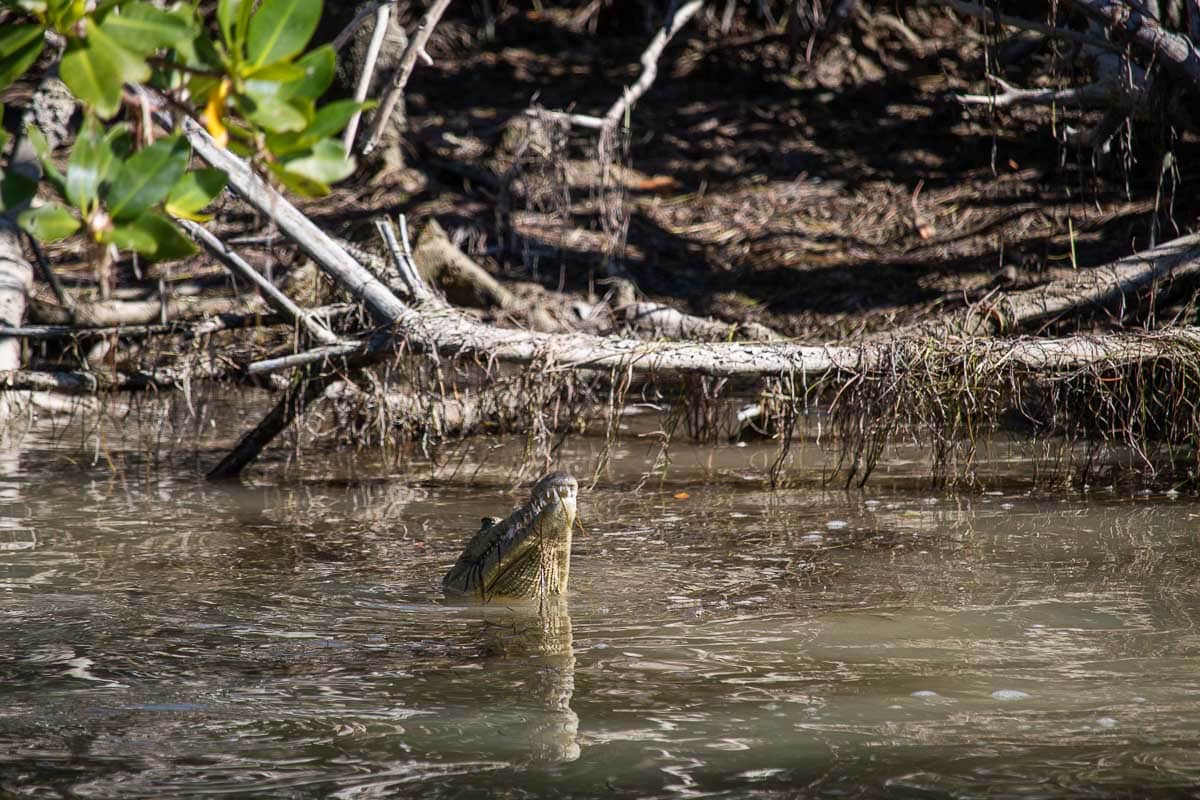
The absolute best place to see American crocodiles in Everglades National Park is the Flamingo Marina. It is near the end of the Main Park Road, adjacent to the Flamingo Visitor Center.
Wildlife viewing at Flamingo is as easy as it gets. Simply walk over to the marina and scan the water and shoreline for movement.
Flamingo sits on the shoreline of Florida Bay and, thanks to its saltwater, crocodiles are commonly seen here. Look for them swimming in the water or lounging among the mangroves. Sometimes, they even sunbathe on the marina’s boat ramp.
Crocodile sightings aren’t guaranteed, though. However, if you spend a significant amount of time here—you can rent kayaks and canoes, grab a picnic from the marina store or lunch at the food truck—you do have a good chance of seeing one.
Additionally, Flamingo is also arguably the easiest place to see manatees in the Everglades.
These friendly and docile sea mammals can often be seen floated in the marina’s water or coming up for a breath of air. As anywhere else in the Everglades, the bird watching is phenomenal here as well.
Florida Bay
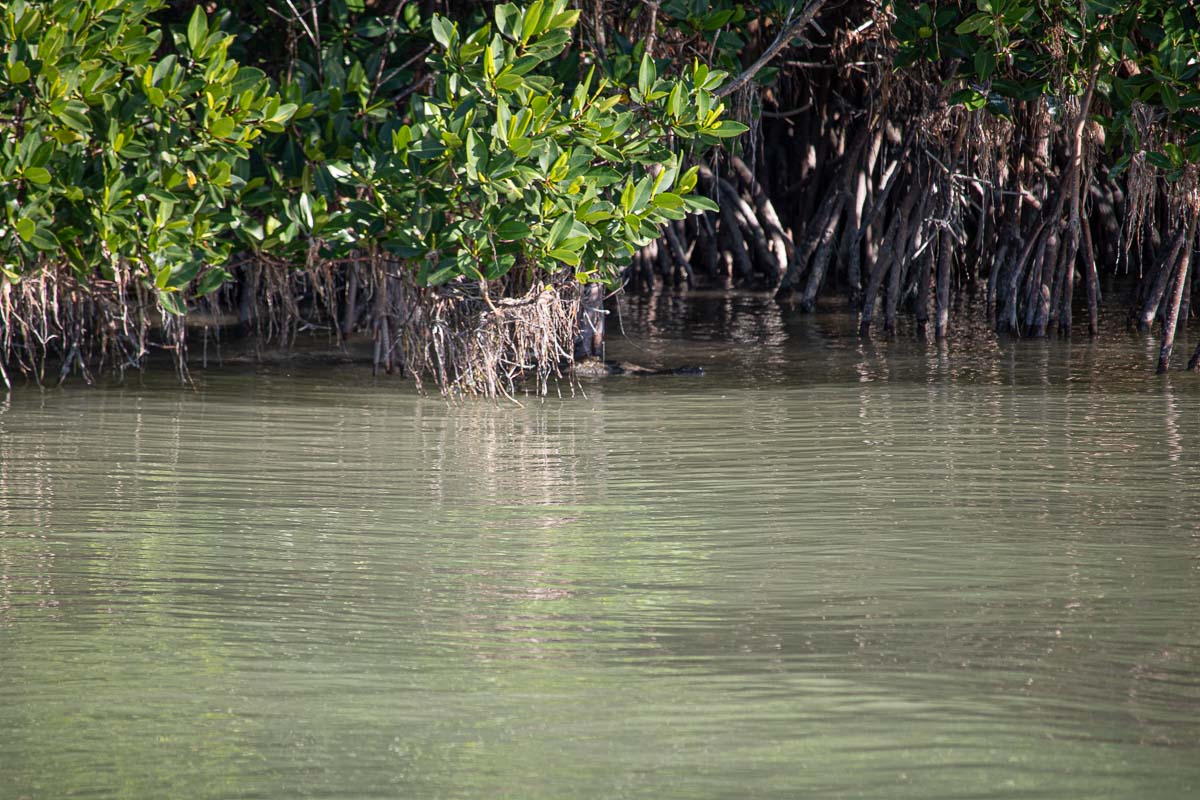
Everglades National Park protects approximately 625 square miles of Florida Bay. Dotted by countless small islands, this vast and shallow lagoon lies between the Florida Peninsula mainland and the Florida Keys.
The average depth of this sprawling saltwater lagoon is no more than 3 feet, making it the perfect habitat for everything from manatees, dolphins and sharks to innumerable water and wading birds and, yes, American crocodiles.
For visitors to Everglades National Park, the best way to explore Florida Bay is on a guided boat tour from the Flamingo Marina. Due to the bay’s shallowness, these boat tours only go out at and around high tide, though, so plan accordingly and check the schedule in advance.
When I joined one of the Florida Bay boat tours, I saw two crocodiles, which I considered an absolute privilege. One was when we were leaving the Flamingo Marina and the other was at one of the keys in Florida Bay.
Besides crocs, you’re almost certain to see other wildlife, too, especially birds like egrets, herons, spoonbills and pelicans. If you’re really lucky, you might spot dolphins or manatees.
Map of the Best Places to See Alligators and Crocodiles in the Everglades
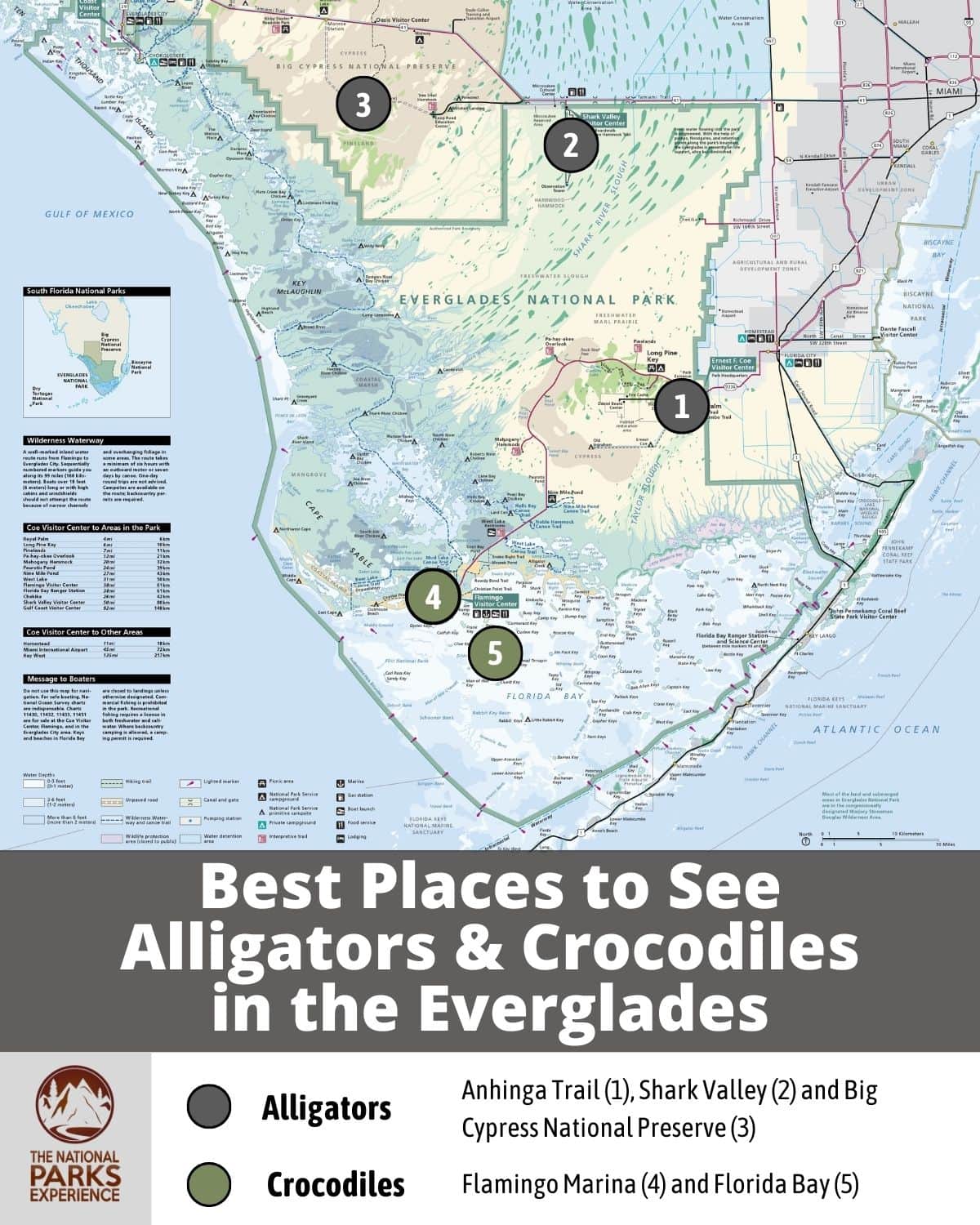
More About Everglades National Park
- Park Website
- Travel Guide
- Topographic Map
- Where to See Wildlife in Everglades National Park
- Famous Birds of the Everglades
- Top Sights on the Everglades Main Park Road
- Top Things to Do in Flamingo
- Accommodation
Have You Ever Seen Alligators or Crocodiles in the Everglades? Which Species Did You Spot and Where Was It? Share Your Everglades National Park Experience Below!
Wildlife Viewing in Other National Parks
- Where to See Grizzly Bears in Glacier National Park
- Where to See Mountain Goats in Glacier National Park
- Where to See Bison in Yellowstone National Park
- Where to See Black and Grizzly Bears in Yellowstone National Park
- Where to See Moose in Grand Teton National Park
- Where to See Black Bears in Shenandoah National Park



